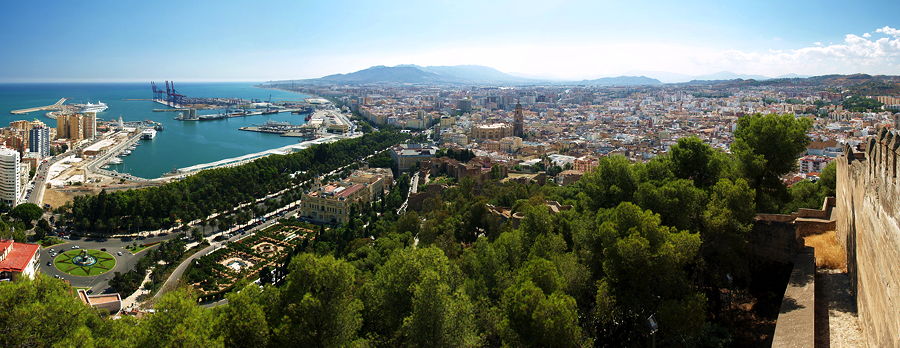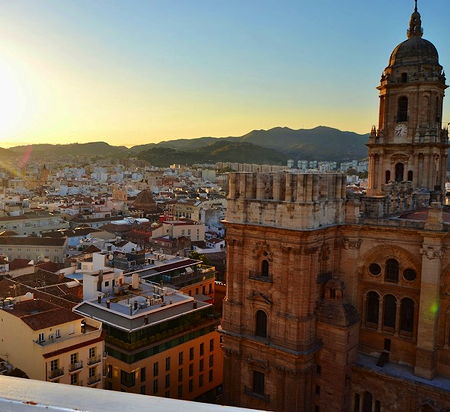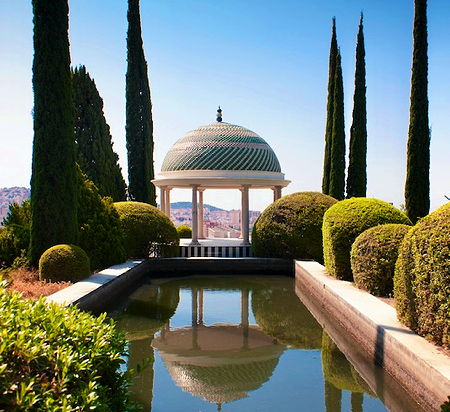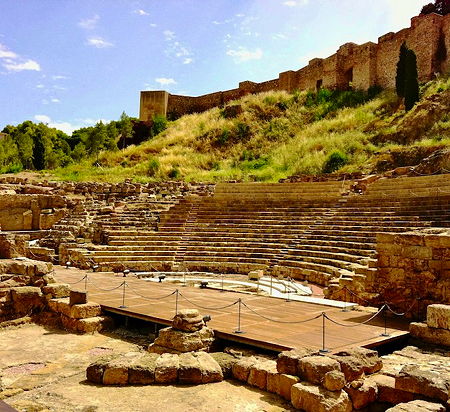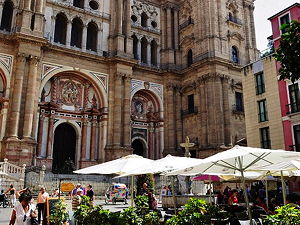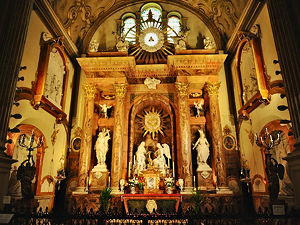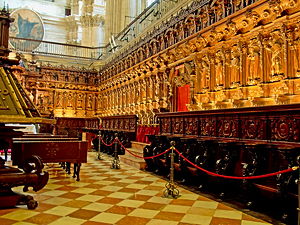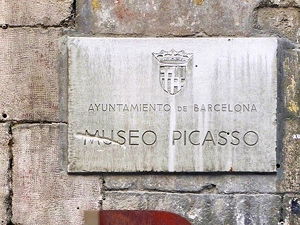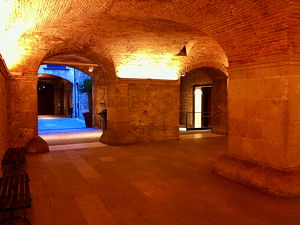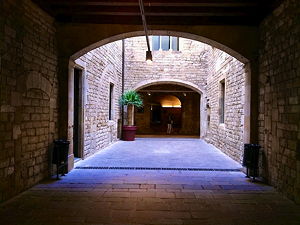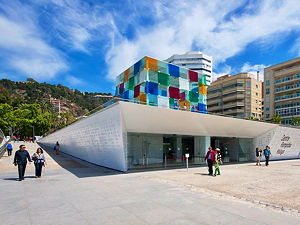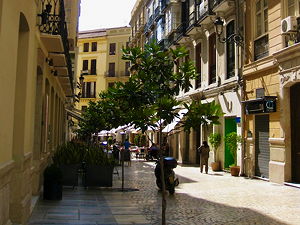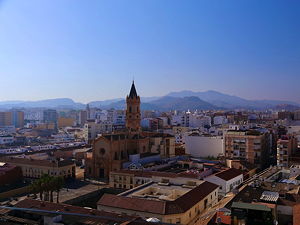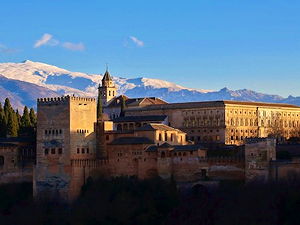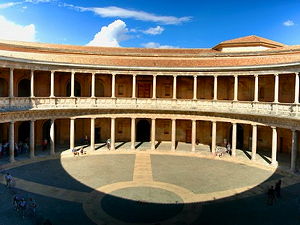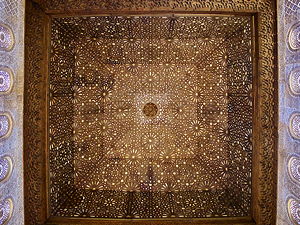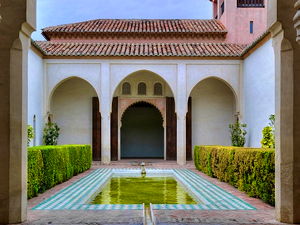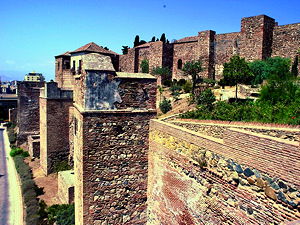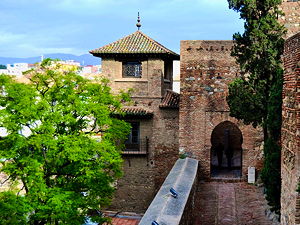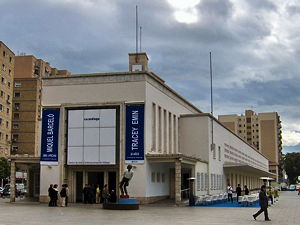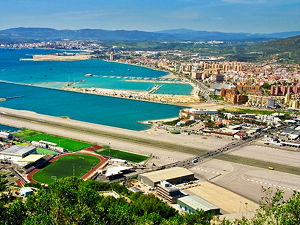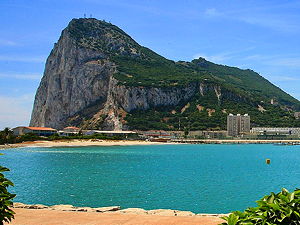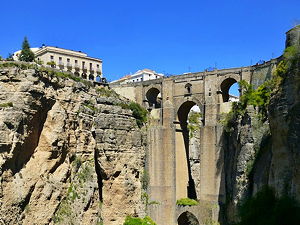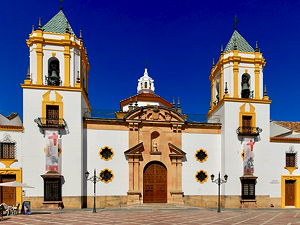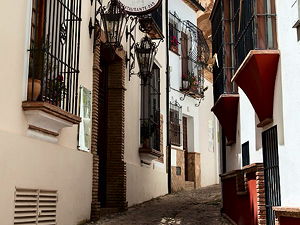Things to do in Malaga, Spain
Located on the coast of the Mediterranean and home to over half a million people, Malaga is Andalusia's principal city.
If offers a host of tourist attractions in its own right: Malaga's cathedral, dating from the 16th century, is a Baroque jewel; the Alcazaba, the city's fort, offers splendid views of Malaga's busy port and across the Mediterranean to Morocco; the tranquil Picasso Museum displays the work of Malaga's most famous son; and other attractions, such as the Modern Art Museum, are complimented by the City's great shopping, restaurants and bars.
Further afield is the world-famous Alhambra Palace, about two hours away by car. &Take a ride along the coast in the other direction and you will come to the well-heeled Marbella and its impressive marina, and then the British Gibraltar and its famous rock and monkey colony.
1. The Malaga Cathedral
Constructed between 1528 and 1782, Málaga's Cathedral is one of Andalucia's most valuable Renaissance and Baroque jewels.
It is an imposing 377-feet long limestone building built on or near the site of a former Mosque.
The Cathedral is often referred to as La Manquita (which roughly translates as 'the one-armed woman'), on account of only one of its two planned towers having been completed. But its proper name is Nuestra Señora de la Encarnación (meaning Our Lady of Incarnation).
The tower that was built is 280 feet in height, making it the second highest in Andalucia after the Giralda in Seville. The Cathedral's exterior is notable for its intricate stonework and peaceful adjoining gardens and courtyard containing over 40 orange trees.
Inside, the cathedral has three naves, two magnificent 17th century organs, and contains impressive mahogany and cedar wood choir stalls that houses 40 carved wooden statues of saints.
where? Málaga Cathedral, Calle Molina Lario 29015, Málaga, Spain T: +34 952 22 84 91
when? Mon-Fri: 10 am to 8 pm, Sat: 10 am to 6:30 pm, Sun: 2 pm to 6:30 pm. Opening hours vary depening on the season. Make sure to check the website for details.
£$€¥ Adults: €6, Juniors (13-17 years): €3, Seniors (65+ years): €5.50.
2. The Picasso Museum, Malaga
Malaga's intimate Picasso Museum holds 233 of Picasso's works
The Museum, housed in the Palacio de Buenavista and close to Malaga's cathedral, was opened by Spain's King and Queen in October 2003. It posthumously fulfils Picasso’s wish that the city in which he was born on 25 October 1881 have a museum to display his works.
The collection is varied, including paintings, drawings, sculptures, ceramics and prints from each of Picasso's eight working decades. Amongst the collection’s most prized works are:
- Mosketeer with Sword, a late Picasso work of a flambouantly dressed musketeer
- Jacqueline Seated, a colourful portrait of his then muse and future wife Jacqueline Roque
- Woman with Raised Arms, inspired by photographer and one-time girlfriend Dora Maar, and
- Acrobat, a simple white and grey composition inspired by the Médrano circus.
The permanent collection is complimented by temporary exhibitions, with Jackson Pollocks 2 by 6 metre Mural on display until September 2016. A retrospective of the works of Uraguayan Joaquín Torres-García will be displayed between October 2016 and February 2017.
The collection and temporary exhibits are housed in the carefully restored 15th century Palacio de Buenavista.
where? Palacio de Buenavista, c/ San Agustín, 8, 29015 Malaga. Tel: (34) 952 127600. Fax: (34) 952 127607. Email info@museopicassomalaga.org
when? Tue to Thur: 10 am to 8 pm; Fri and Sat: 10 am to 9 pm; Sun/public hols: 10 am to 8pm; Dec 24 and 31: 10am to 3pm. Closed Mons, 25 Dec and 1 Jan.
£$€¥ Adults: €9 (for permanent and temporary collections), Concessions: €7; Children: free.
3. Malaga's city centre
A trip to Malaga isn't complete without a walking tour of Malaga's city centre.
Start your tour at the bottom of the pedestrianised Calle Marcos de Larios, one of the most beautiful shopping streets in Europe. After a hundred metres, you will find the Lepanto cafe on the right hand side, a perfect place to pick up some Malaga raisin ice cream (with raisins soaked in Pedro Ximénez sherry coming from the nearby Jerez de la Frontera).
Continue up past clothes shops displaying the latest fashions until you reach Plaza de la Constitucion at the top of the hill. This is a pretty square which formerly housed the mayor's house and city jail. It has a large central fountain, well-tended palm trees, and is surrounded by cafes.
Take a right and head east down one of the small side-streets such as Calle Sta Maria or Pje Chinitas, where you'll find a collection of great tapas bars (we liked Meson Gibralfaro). After a bite or a refreshing beer continue until you hit Calle Lorina Mario, a large street which leads down to Malaga's Cathedral.
Once you've taken in this wonderful limestone structure and its gardens, take Calle Cister (to the north of the Cathedral) down to Plaza de la Anduana. From here, you'll see the remains of the Roman amphitheatre and the Alcazaba above you.
Head south, towards the waterfront, and cross the busy dual carriageway to get to the Parque de Malaga. This offers wonderful planting, and lots of shade, allowing you to head west back to Calle Marcos de Larios.
4. The Alhambra, Grenada
The Alhambra (which roughly translated means ‘red fortress’) is a palace constructed during the 14th century by the Moorish rulers of Granada.
A few hundred years later, after the Christian conquest, the Alhambra became the Palace of the Holy Roman Emperor, Charles V. The Alhambra complex is built on a 740 x 200 metre plateau (pictured) and contains 13 towers and a number of palaces, chapels and defensive fortifications.
It is one of Spain’s major tourist attractions on account of its stunning Islamic architecture, typified by Calliphal horse-shoe arches, intricate carvings and stonework, brightly coloured tiles, and tranquil courtyards containing fountains and pools. The Alhambra’s gardens are another major attraction, with their clipped hedges, grottos, array of flowers and cypress avenues.
The Alhambra is the setting for Washington Irving’s Tales of the Alhambra, Salmon Rushdie’s The Moor’s Last Sigh, and was the inspiration for Tarrega’s famous tremolo study for guitar Recuerdos de la Alhambra.
where? The Alhambra is in Granada, a 90 minute drive from Malaga.
when? Nov-Apr: 8.30 am to 6 pm (with night openings on Fri and Sat between 8pm and 9.30pm). May-Oct: 8.30am to 8 pm (with night openings on Fri and Sat between 10pm and 11.30pm). Closed 25 Dec and 1 Jan.
£$€¥ Adults: €14. As the number of visitors is limited, advance booking is highly recommended at the official Alhambra website.
5. The Alcazaba
Built on a hill in central Malaga, the 8th century Alcazaba is a Moorish fortification that was used as the Palace of the rulers of Malaga from the 11th century.
Thought to be the pest preserved citadel in Spain, the Alcazaba overlooks Malaga’s port and is close to the city’s other important attractions such as the Cathedral and the Gibralfaro Castle.
It is enclosed by two defensive walls, and its inner citadel is reached by a winding street which passes through the Puerta de las Columnas, Arco del Cristo and Arcos de Granada gates and attractive landscaped gardens. A small palace within the inner perimeter is now the home of Malaga’s Archaeological Museum.
Visitors should also take in the ruins of a 2nd century Roman amphitheatre found close to the Alcazaba’s entrance.
where? 2 Calle Alcazabilla 29012 (15 mins by foot from the city's train and bus stations).
when? Tues-Sun (closed Mon): 9.30 am to 7 pm.
£$€¥ €1.95.
6. The Modern Art Museum
Housed in the converted Wholesalers' Market building, and opened in 2003, Malaga's Modern Art Museum displays over 400 works of art over 6,000 square metres.
The Museum aims to showcase artistic movements and trends characteristic of the twentieth century, and in particular its final decades.
Its permanent collection includes works from internationally renowned artists such as Louise Bourgeois, Thomas Hirschhorn, Damian Hirst, Julian Opic and Thomas Ruff.
Additionally, the Museum houses a number of works by Andalucian artists, including Victoria Civera and Santiagao Sierra.
where? Central Malaga, located between Avenida del Comandante Benítez and the calle Alemania.
when? Generally 10am to 8pm, but check the Museum's website for further details.
£$€¥ Free
7. Gibraltar
Gibraltar is a British overseas territory located at the entrance of the Mediterranean and overlooking the Strait of Gibraltar.
Gibraltar occupies a mere 6.8 square kilometres, but has its own airport and is home to a British Royal Navy base. It is well worth a day-trip. Visitors are advised to park their cars on the Spanish side of the border, and walk through passport control.
Once inside Gibraltar, visitors can either walk or take the bus into the town centre, passing over the airport’s remarkably short runway. The real attraction is Gibraltar’s famous 426 metre high limestone rock, accessible on foot or by cable car.
The views from the top back down to Gibraltar and its busy harbour and out over the Strait to North Africa are impressive. You are likely to be joined by a number of the famous and (usually) friendly Rock Apes.
where? Gibraltar is about 100 miles from Malaga, and can often be reached in 90 minutes.
when? All year round, but it is best to choose a clear day.
£$€¥ The cable car operates from 9.30am to 7.15pm. The return adult fare is £16 and the return child fare is £7.
8. Ronda
Found in the mountains, at an elevation of 744 metres, Ronda is a pretty town, complete with bull ring and stupendous views of the El Tajo gorge.
Ronda's history dates from the 9th century, making it one of the region's oldest settlements. Its Old Town retains Islamic features, whilst Ronda's more recent history saw it as a major trading centre and then favourite hangout of writers like Ernest Hemmingway and Orson Welles.
Start your visit at the Puente Nuevo, a towering stone bridge over the El Tajo gorge. Built between 1751-1793 (construction claimed 50 lives), the bridge's three arches span the 390 foot drop to the Rio Gyadalevin below. To the south is found the Casa del Ray Moro, with beautiful terraced gardens and access to the El Mina stairway to the bottom of the gorge. But take care: the 300 steps are not well lit and often wet.
The Plaza de Toros should be your next stop. The town's bullfighting ring is one of the oldest and most respected in the country. This Martin Aldehuela designed structure is 66 metres in diameter, seats 5,000, and is made of soft sandstone. The accompanying Museo Taurino is devoted to bullfighting's history, and displays a costume worn by legend Jesulin de Ubrique.
Other attractions include the Museo de Ronda (housed in an impressive palace and displaying Roman and Islamic artefacts), the Iglesia de Santa Maria La Mayor (the city's original mosque, later converted into a church), the Banos Arabes (well preserved Arab thermal baths dating from the 13th century), and the town's great food (with mountain fare such as game and stews accompanying more usual tapas dishes).
where? Ronda is about 100 kilometres from Malaga, and can be reached in about 90 minutes.
